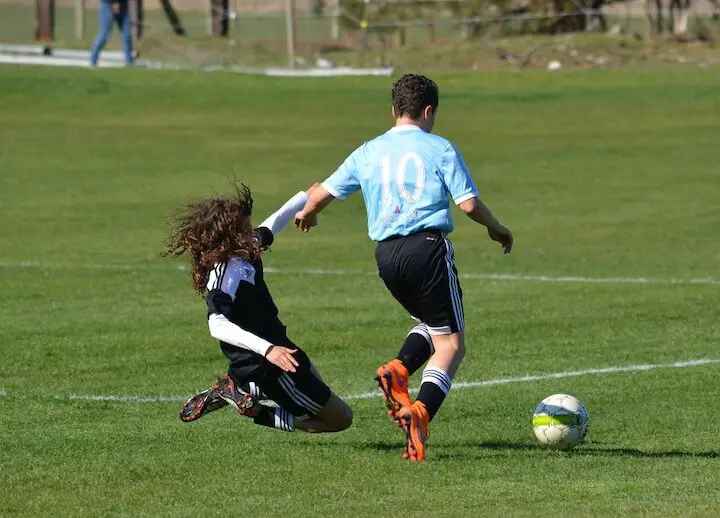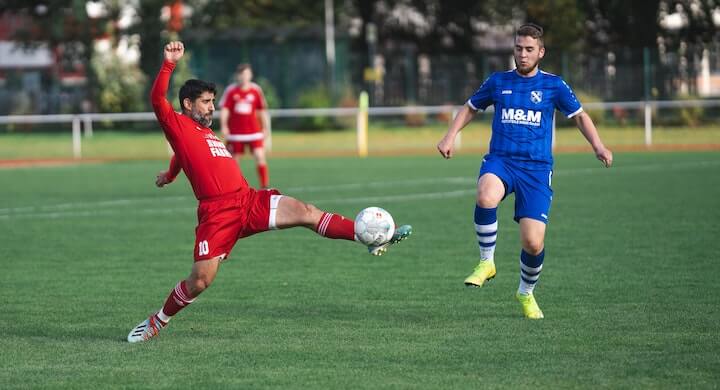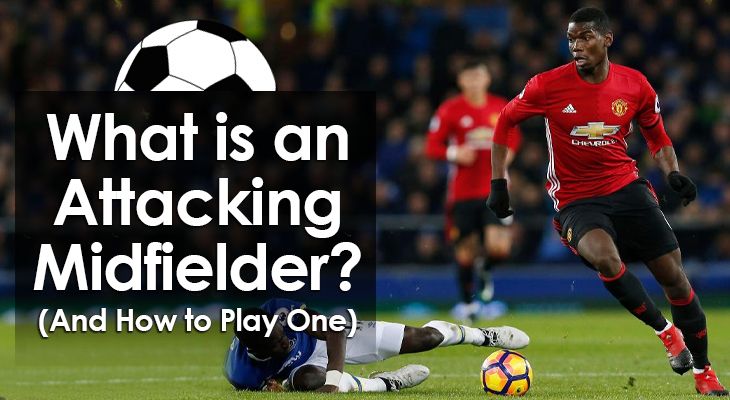What is an Attacking Midfielder? (And How to Play One)
Straight off the bat, I should clarify that this article specifically refers to central attacking midfielders.
I feel the need to clarify this because, in some quarters of the soccer community, wingers are sometimes referred to as Left or Right Attacking Midfielder (instead of wingers) -- that’s not the case here.
Let's take a closer look at the role of an attacking midfielder, the key attributes required in the position, and some of the best attacking midfielders in the game.
Let’s dive in!
What Is An Attacking Midfielder?
An attacking midfielder traditionally occupies the space between the midfield and the attack, operating in that free role behind the striker/s as a playmaker or a shadow striker.
Originally, attacking midfielders were the number “8” of the team.
However, modern soccer has changed things a little bit, they’re number 10s now.
The position of the player on the pitch might be enough to identify an attacking midfielder -- but the actual function of the role is more important.
In that respect, there are different roles that an attacking midfielder can function in.
Roles Of An Attacking Midfielder
Traditionally, an attacking midfielder would start in any of the following formations:
- 4-2-3-1
- 4-4-1-1
- 4-4-2 diamond
- 3-4-2-1 / 3-4-1-2
However, with the modern modification of the position, attacking midfielders can now start in formations that have a three-man midfield on paper, but require one of the two central midfielders to fill in the role when the team is in attacking phases of play.
Depending on the skillset of a specific player, or the requirements of the coach, an attacking midfielder may take up any of the following roles:
Role #1 - Advanced Playmaker
This is the most popular version of an attacking midfielder in soccer today.
As the name already implies, the advanced playmaker is the creative heartbeat of the team, playing a free role in the opponent’s middle third and creating scoring chances by connecting the midfield with the attack.
To be successful as an advanced playmaker, the most important attributes are:
- Passing
- Vision
- Technique
Role #2 - Shadow Striker
This attacking midfield role was pretty popular in the early periods of soccer history.
The 4-4-2 was the most popular formation, but it often transitioned into a 4-4-1-1 when teams were in attacking phases of play.
In that formation, the shadow striker would be operating off the shoulder of the main center forward, feeding off layoffs, or dragging the opponent’s defenders out of position to create space for the striker or midfielders.
The shadow striker is not widely used nowadays, and perhaps the most popular example is the role that Antoine Griezmann occasionally occupies when playing for the French national team.
To be successful as a shadow striker, the most important attributes for a player to have are:
- Finishing
- Off the ball movement
- Technique
Role #3 - False “10”
The least popular attacking midfield role on this list.
The false 10 hardly ever gets a mention when fans are talking tactics, but there have been many instances of different players functioning in the role in different games, so it deserves a shout.
A false “10” is a tactical take on the attacking midfield role where the player is a central attacking midfielder on paper but often roams to the wings (or a specific wing) to whip crosses in or just to drag a defensive midfielder out of position and create space for teammates to run into.
The presence of the false 10 on the wings also helps to overload the flanks if the team is playing with wingers, as the combination of the full-back, winger, and attacking midfielder should be more than the opponent can handle.
Two examples of players that have functioned in this role are Papu Gomez and Kevin de Bruyne.
The latter is well-known for drifting out to the right-wing where he can make use of one of his strongest assets - crossing.
To be successful as a false “10”, the most important attributes for a player to have are:
- Passing
- Off the ball movement
- Vision

Key Attributes of an Attacking Midfielder
a. Passing
The player needs to have a good range of passing.
Short, medium, long, and improvised passes.
b. Vision
The player needs to have the vision to pick out passes that unlock a defense.
This could be as varied as an eye-of-the-needle short pass or a crossfield pass that loops over the opponent’s defense line.
c. Technique
The player needs to have excellent technique to strike the ball in various situations - mostly passing, crossing, or shooting.
d. Off the Ball Movement
Many times, teams have a defensive player man-mark the attacking midfielder.
Here, excellent off-the-ball movement would the attacking midfielder to shake their man off.
Additionally, as the playmaker on the team, movement is crucial to make yourself always available to receive the ball.
e. Finishing
Attacking midfielders will typically see many opportunities to get into the box, which means there will be chances to score.
The need for this attribute becomes even more important if the player is functioning as a shadow striker.
f. Composure
Composure in front of goal, or composure to pick out a pass when under pressure are just two scenarios where this attribute could be key for an attacking midfielder.

10 Excellent Attacking Midfielders
Some of the best players in soccer history were number 10s, and they functioned in different roles for their clubs or national sides.
Players such as Ronaldinho and Johan Cryuff were better known for their playmaking ability.
Meanwhile, Diego Maradona was more popular for being an assassin in front of goal.
Five of the best, retired number 10s in soccer history are:
- Ronaldinho Gaucho
- Johan Cryuff
- Zinedine Zidane
- Michel Platini
- Dennis Bergkamp
There are still many elite number 10s in the game today that you can learn from too. Five excellent options are:
- Mesut Ozil
- Kevin De Bruyne
- Thomas Muller
- Dmitri Payet
- Bruno Fernandes
Conclusion
The classic number “10” role might be getting phased out in modern soccer, but it is more a case of evolving tactics than sudden irrelevance.
Players that have the skillset to play in attacking midfield are still very much a premium as they are usually versatile enough to operate deeper in midfield or on the flanks.
The most important thing is to develop a skill set that is well-rounded and relevant to the game, and if you’re good enough, you’ll get a spot on the team!
Further Reading: 11 Soccer Positions Explained (Roles and Responsibilities)

